
| ⟪ Metafont ⟫ | «Typography» | «Home» | «Map&Rev» |
A type design enthusiast all along, I was practically introduced to it in the early 1990s when we were in the university. I first laid my hands on Fontographer, running on a Mac, for a while in the computer lab of the Engineering University, where a number of my friends studied. A couple of friends of mine and with I then tried to design a font and write a program to type Bengali on Windows. It did not get any going because of a bickering over which of raster or vector should be the format of the font.
In the next few years, I became more or less conversant with the functions of Fontographer, this time, on Windows and the Altsys software was in its Version 3.5. I designed a few bits and pieces for my personal chores. I then changed a Times New Roman font, in 1993–1994, so that I could type IPA symbols. The ascenders in the font were much too higher and the descenders much to low. I used the font in the lesson plan that i had to prepare for a session of classroom teaching in my MA year of the English language.

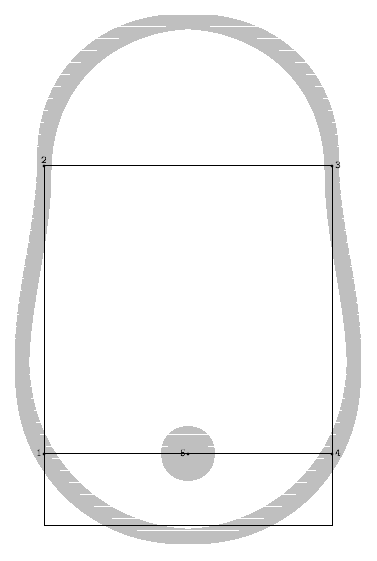
As the century began, I switched from Window X to Linux, Red Hat Linux, on my personal desktop at home and started learning the Metafont program. I wrote a proof of concept code and ran the program to view the smoke proof. What came up was bizarre and it clearly showed my lack of control over the curves and tension. I first tried to draw a circle with a dot inside it, resting on the baseline. but curves are way beyond the sidebearings and protruding too much through the height, as it the right grab.
beginchar(97,0.80stwd#,stht#,stdp#); "Strange char"; % coords dfn; z1 = (0,0); z2=(0,h); z3=(w,h); z4=(w,0); % circle pickup pensquare scaled penth#; draw z1..z2{up}..{down}z3..z4..cycle; % new coords central z5=(1/2w,0); % drawdot z5; fill fullcircle scaled 1.5pt shifted z5; penlabels(range 0 thru 5); endchar;
My next attempt was to draw the base of the first Bengali vowel — অ. The shape looked like what I tried to draw, but the curves ran beyond the bounding box, or the character box and it was an awful base of the vowel অ.

beginchar(100,stwd#,stht#,stdp#); "Ta Base"; % coords dfn; z1 = (0,h); z2=(1/2w,h); z3=(w,h)+(1/10w,1/10h); z4=(0,0); z5=(1/2w,0); z6=(w,0); z7=(1/3w,1/3h); pickup pencircle xscaled .4pt yscaled .8pt rotated 22; draw z2..z3..z6..z7..z1; penlabels(range 0 thru 7); endchar;
My next Metafont endeavour, purportedly a complete font with a single glyph, was a taka sig, in 2003,n that I needed to lay out the Stylebook of New Age which came out in August 2004. The book was formatted with plain TeX macros running on teTeX.
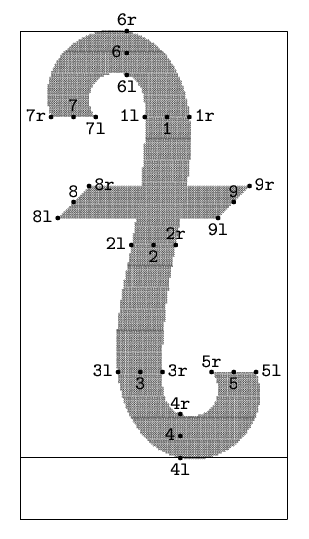
Here is the code that anybody can use, by saving the text as taka10.mf or so and having in installed in the texmf system.
% taka10.mf, abu jar m akkas mode_setup; font_size 10pt#; font_identifier:="taka"; unit#:=0.68pt#; penth#:=1unit#; define_pixels(unit); define_blacker_pixels(penth); beginchar("t",6unit#,9.6unit#,1.4unit#);"The Bangladesh currency symbol Taka"; z1=(.55w,.8h);penpos1(penth,0); z2=(.5w,.5h);penpos2(penth,0); z3=(.43w,.2h);penpos3(penth,0); z4=(.6w,.01h);penpos4(penth,85); z5=(.83w,.2h);penpos5(penth,180); z6=(.4w,.95h);penpos6(penth,90); z7=(.2w,.8h);penpos7(penth,180); z8=(.2w,.6h);penpos8(penth,45); z9=(.8w,.6h);penpos9(penth,45); penstroke z7e..z6e..z1e..z2e..z3e..z4e..tension 1..z5e; penstroke z8e..z9e; penlabels(range 1 thru 12); endchar; end;
I also designed a constructed script for Bengali based on the phonemes used in the language in 2005. Lie most constructed scritps, this also looked weird. and I designed a font with Metafot for the script.
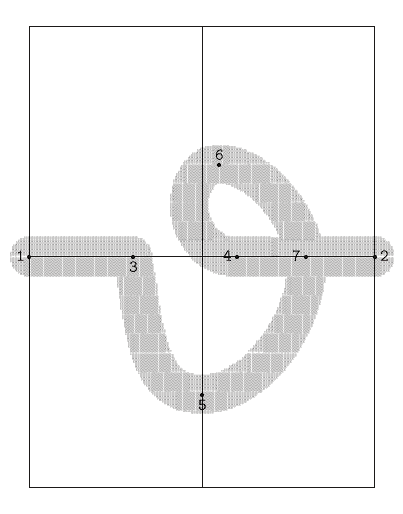
I later designed an Ol Chiki, or Ol Cemet’, font in 2002 that can be used to write the Sangali language. I have never released the font, but I hope to do that soon.

As part of a plan to design fonts for all the languages in use in Bangladesh that have writing system, I then designed a Chakma font in 2007. I completed all the canonical forms and some conjunct forms. With a few more, this could be easily employed to write Chakma. But I stopped working on it for reasons not still clear to me.

Finally, I buckled down to my designing a Bengali face that I still need to write and lay out a book on Bengali typography. I desgined 50 characters but failed to make any further progress.
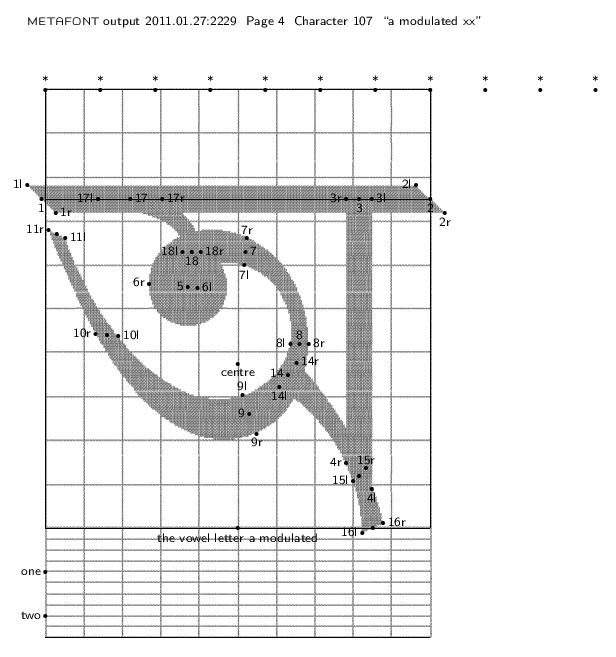
I tried other options in Metafont programming and even designed more than 20 symbols of proofreading marks that I had a mind to use in my I-don’t-know-when-I-could-finish-it book on typography.
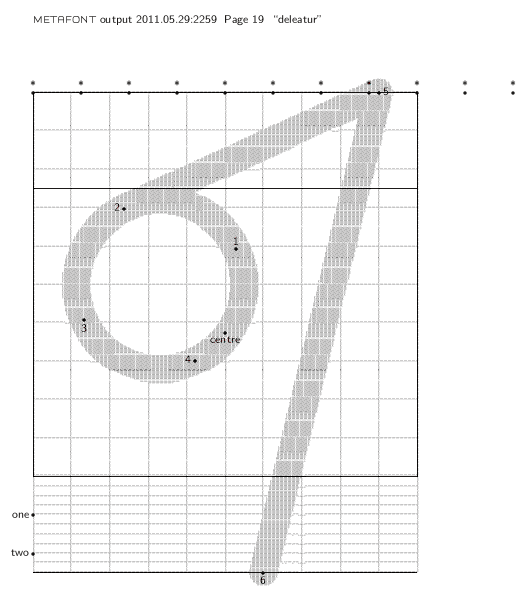
But, eventually, I released two handwriting fonts for Bengali, done on Fontlab, in March 2014, for two houses that publish comic books. Both of them are legacy fonts, not Unicode, and a few books have been in print in the fonts.

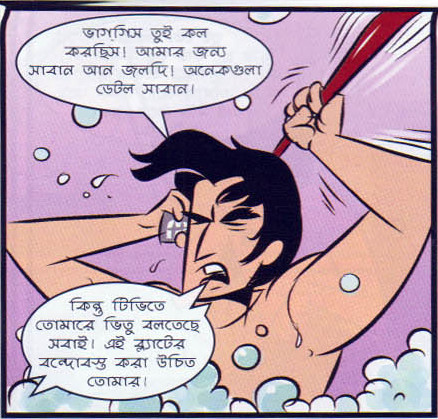
And, a view of the glyph sets:
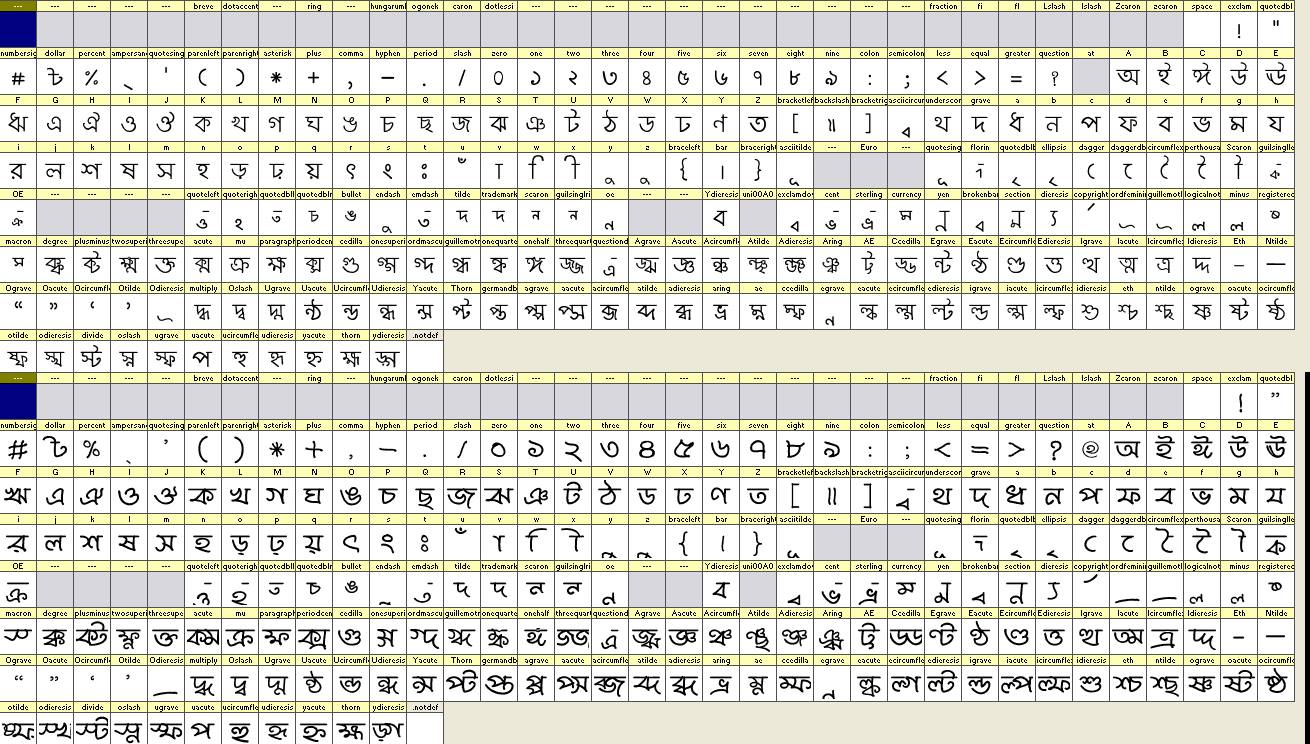
Rev.: vii·xi·mmxxii